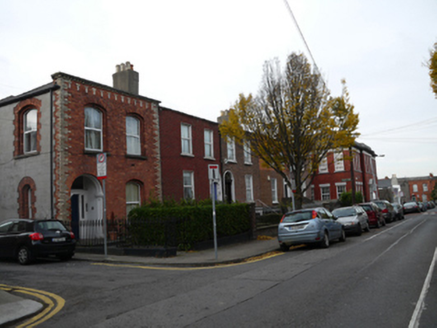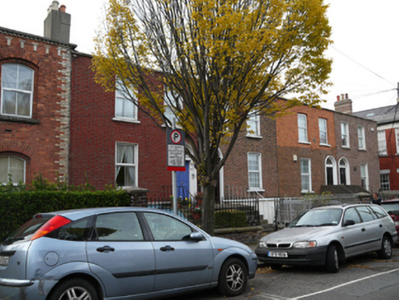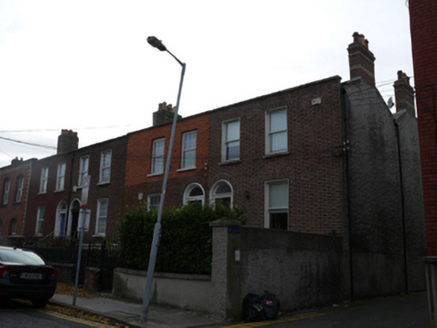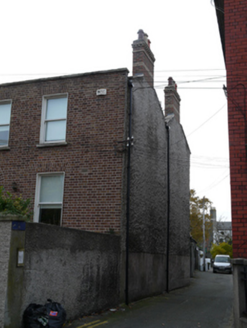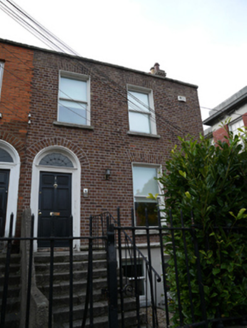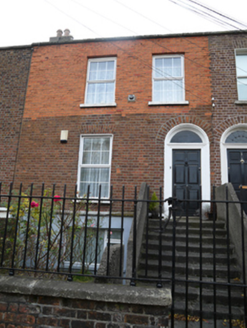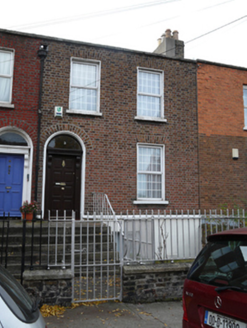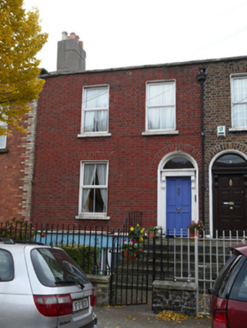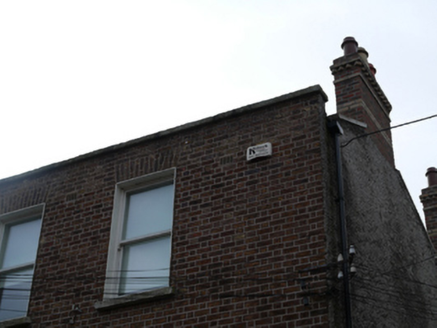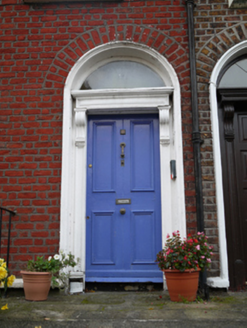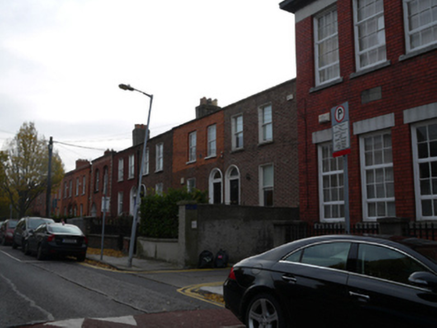Survey Data
Reg No
50080956
Rating
Regional
Categories of Special Interest
Architectural
Original Use
House
In Use As
House
Date
1820 - 1840
Coordinates
315171, 232602
Date Recorded
15/11/2013
Date Updated
--/--/--
Description
Terrace of four two-bay two-storey over raised basement houses, built c.1830. M-profile pitched roofs with parapet having cut granite capping, brown brick and rendered chimneystacks having some clay chimney pots, and chimneystacks to no.1 having yellow brick sawtooth cornice and yellow brick courses. Brown brick walls laid in Flemish bond having cut granite string course over rendered walls to basement level, to front (east) elevation. Recent red brick to first floor of no.2. Roughcast rendered walls to south gable. Square-headed window openings having cut granite sills, one-over-one timber sash windows, and replacement uPVC windows. Round-headed door openings having plain fanlights, cobweb fanlight to no.1, painted carved timber door surrounds, those to numbers 3 and 4 having frieze and cornice supported by brackets, and timber panelled doors, approached by cut granite steps with wrought-iron railings. Some front gardens enclosed by wrought-iron railings on brick walls with cut granite capping, and wrought-iron pedestrian gates. Roughcast rendered wall to northern boundary of no.1.
Appraisal
This terrace retains much of its early form, fabric and character. The earliest terrace on the street, it shares scale, form, and palette of materials with neighbouring terraces. The streets in this area were built by private developers in groups of as few as two or three, leading to a lively and attractive variation in decorative finishes in houses built in similar materials. The front garden boundaries remain intact, maintaining the early suburban character of the street. The area of Portobello, including Bloomfield Avenue, began to develop following the opening of the canal harbour in 1801.
